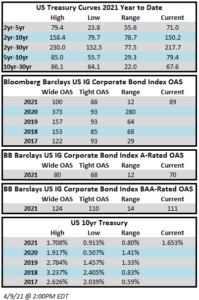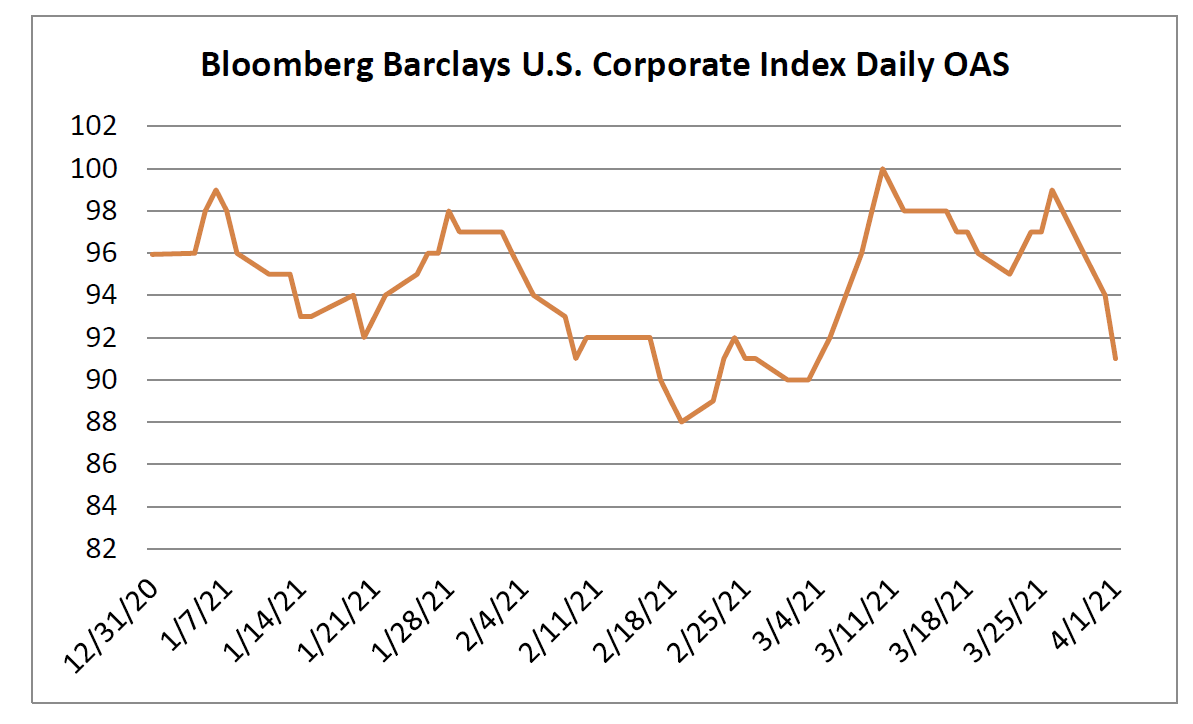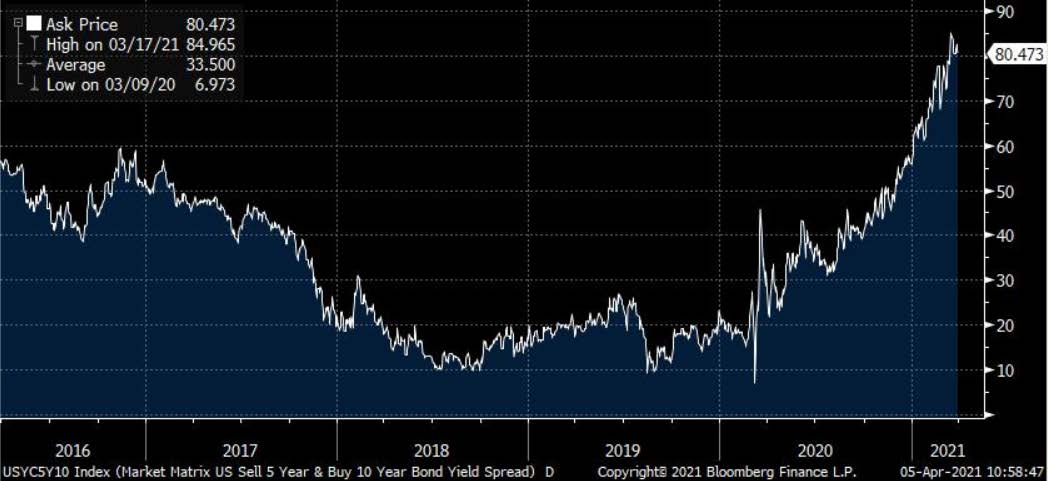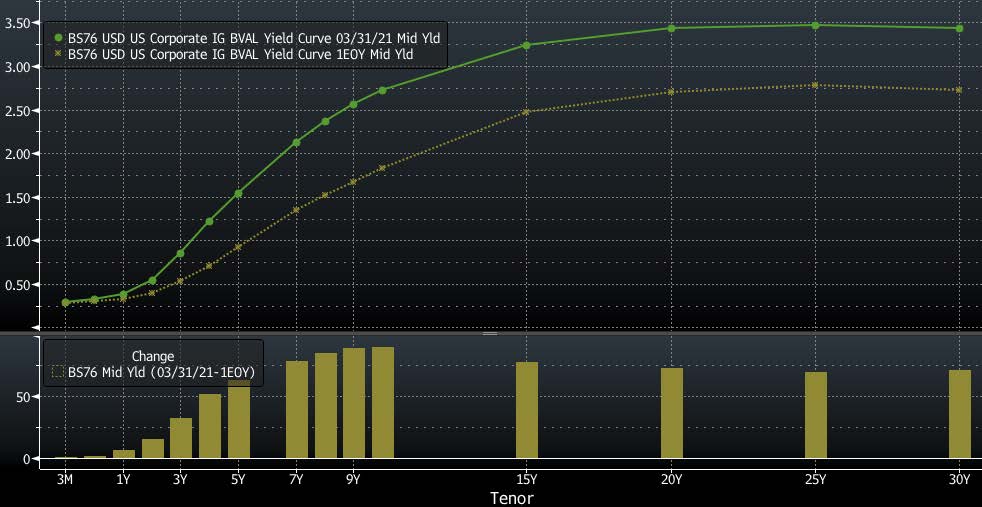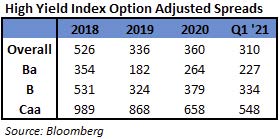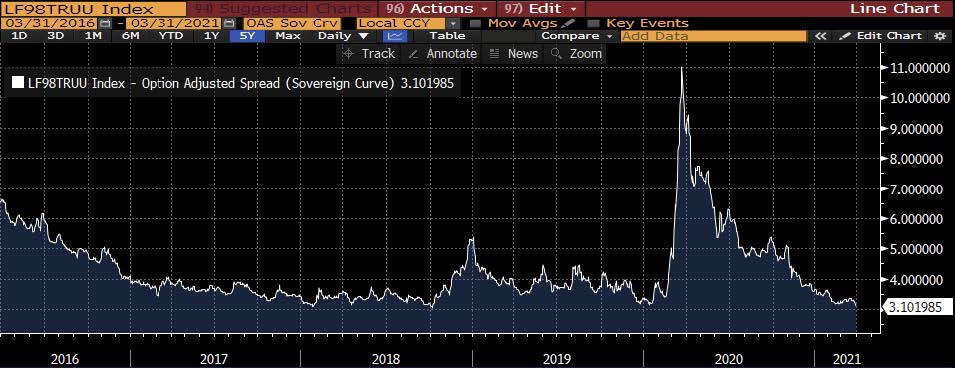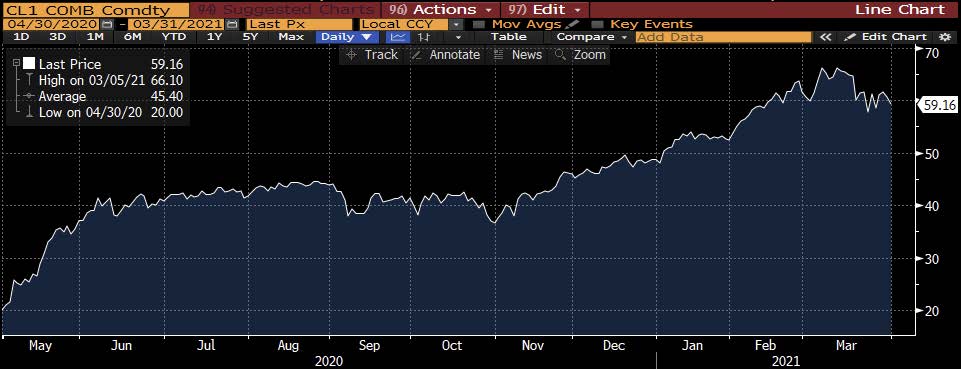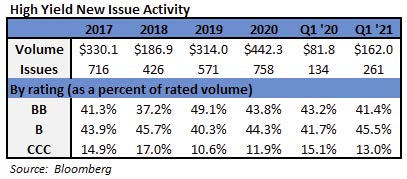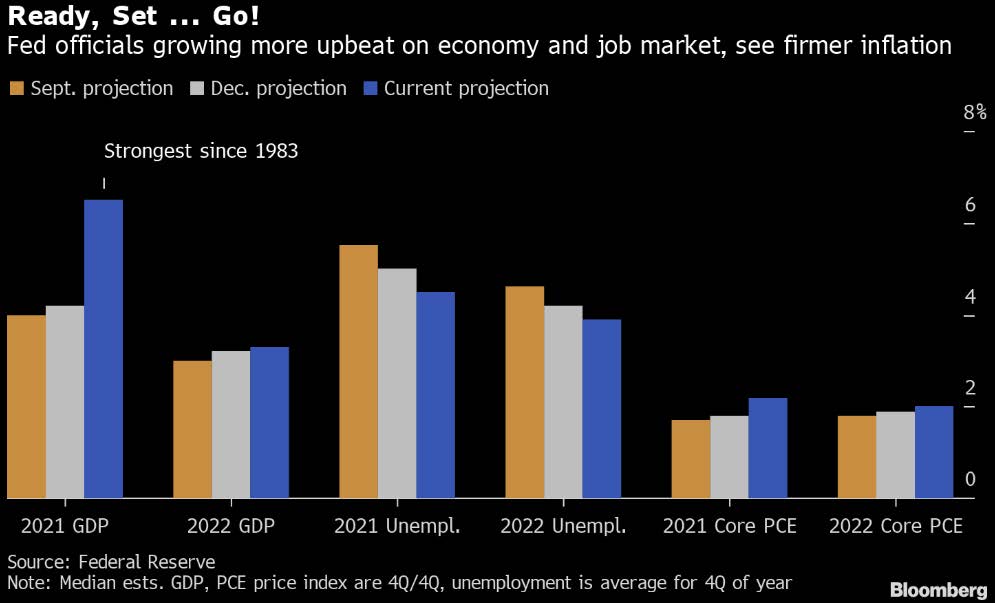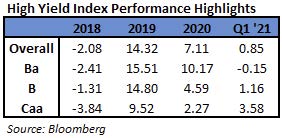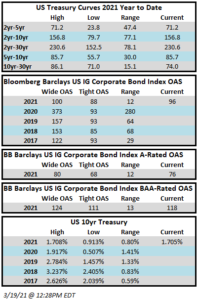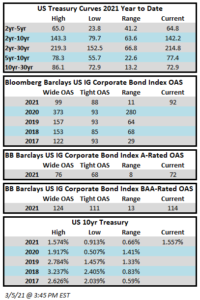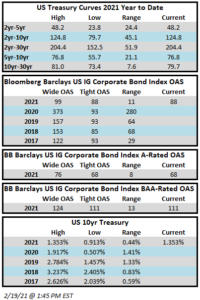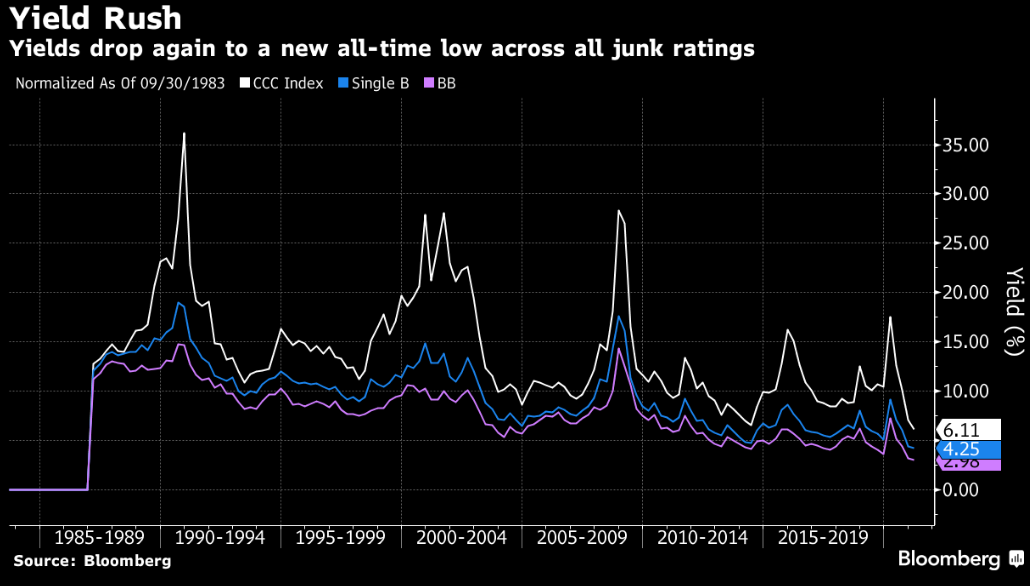Fund Flows & Issuance: According to a Wells Fargo report, flows week to date were -$0.7 billion and year to date flows stand at -$3.7 billion. New issuance for the week was $7.2 billion and year to date issuance is at $194.7 billion.
(Bloomberg) High Yield Market Highlights
- April is set to become the fifth-busiest month for junk-bond issuance by the end of Friday as about $1.6 billion is slated to price. A total of $47.03 billion has been sold so far this month, trailing September 2020’s $47.065 billion for a spot in the top five, according to data compiled by Bloomberg.
- This past March was the heaviest ever with almost $60b and January was the fourth-busiest with $52b
- Three of the five most active months on record have occurred this year, contributing to the busiest quarter of all-time
- Junk bonds are set post the biggest monthly gains since December, with returns of 1.06% month-to-date. This would be the seventh consecutive month of gains and the longest winning streak in more than a year
- The riskiest high-yield bracket — CCCs — are on track to post the best monthly returns in the market with 1.2% gains month-to- date. This is the 13th straight month of gains and the longest rallying stretch since September 1992
- The broader junk bond index yield closed at 4.03% and spreads were at +293bps, just 3bps away from the 14-year low of +290bps set on April 7
- CCC yields were flat at 6.13% and spreads closed at +504bps, just 11bps off the 14-year low of +493bps
(Bloomberg) Biden Musters Early Congress Momentum to Pass Tax-Spend Vision
- President Joe Biden is likely to see some version of his $4 trillion economic plan passed in Congress by September or October if he can keep various Democratic factions from splintering the party and continue fending off Republican attempts to paint it as radical.
- Biden holds some advantages in pushing for what would be a massive expansion of the government, not the least of which is that the trillions of dollars spent to counter the economic dislocation of the Covid-19 pandemic reset expectations in Congress and among voters about fiscal policy.
- Once Biden’s plan is put into legislative text, Democrats can use Senate rules to bypass Republican opposition to most of it.
- But the president’s proposals won’t emerge from Congress unscathed, and it’s not yet clear which parts will be left on the cutting room floor or what might be added. There is also the question of whether Congress, with Democrats holding only the narrowest margin of control, sticks to Biden’s two-part vision of a roughly $2.3 trillion tranche focused on infrastructure and manufacturing and $1.8 trillion package focused on education and child care.
- The first test will be infrastructure. There is a strong possibility that Congress is able to come together on a smaller, bipartisan measure focused on roads, bridges, transit, water and broadband internet in the coming weeks.
- Biden ally Senator Chris Coons of Delaware said trying to strike a deal with Republicans on some portion of Biden’s plan is necessary because there are Democrats who will balk at trying to pass the rest of it on a partisan basis as was done with the $1.9 trillion Covid-relief bill earlier this year.
- Negotiating with Republicans is crucial “both for the benefits of bipartisanship on its own and for internal and political reasons,” Coons said.
- Negotiations won’t end even if Democrats go it alone on the bigger part of Biden’s plan.
- The Senate Democratic caucus spans the gamut from self-described democratic socialist Bernie Sanders, who is already pushing to add an expansion of Medicare to the mix, to Manchin, who is already calling the level of spending “uncomfortable.” Manchin has expressed concern that the tax increases on corporations Biden proposes to pay for his plans could hurt the economy.
- In the House, Democrats currently hold only a six vote majority. It will be a challenge to manage the competing interests of the Congressional Progressive Caucus, which is pushing for trillions more in spending to be added to the Biden plans, and moderates who worry about keeping their seats in the 2022 midterms where the GOP will have a redistricting advantage.
- In addition, there is a faction of lawmakers from high-tax states threatening to withhold support on any tax-related legislation unless it also repeals the $10,000 cap on deductions for state and local taxes.
- The moderate Blue Dog Coalition warned in a Wednesday statement that Democrats must be realistic in crafting the bills and that “messaging bills that cannot pass both chambers do not put people back to work, do not help open small businesses, and do not lower the costs of health care.”
- McConnell on Thursday said Biden was dividing the country and warned that changes made without GOP support in Congress could easily be reversed whenever Republicans regain control of Washington.
(Bloomberg) Fed Strengthens View of Economy While Keeping Rates Near Zero
- Federal Reserve officials strengthened their assessment of the economy on Wednesday and signaled that risks have diminished while leaving their policy interest rate near zero and maintaining a $120 billion monthly pace of asset purchases.
- “Amid progress on vaccinations and strong policy support, indicators of economic activity and employment have strengthened,” the Federal Open Market Committee said in a statement following the conclusion of its two-day policy meeting. “The sectors most adversely affected by the pandemic remain weak but have shown improvement. Inflation has risen, largely reflecting transitory factors.”
- The Fed said that “risks to the economic outlook remain,” softening previous language that referred to the pandemic posing “considerable risks.”
- Powell and his colleagues met amid growing optimism for the U.S. recovery, helped by widening vaccinations and aggressive monetary and fiscal support.
- At the same time, a rise in coronavirus cases in some regions around the world casts a shadow over global growth prospects, giving policy makers reason to remain patient on withdrawing support. Fed officials have also been largely dismissive of inflation risks for the time being, saying a jump in consumer prices last month was distorted by a pandemic-related decline in prices in March 2020.
- U.S. central bankers repeated they would not change the pace of bond buying until “substantial further progress” is made on their employment and inflation goals.
- Forecasters surveyed by Bloomberg expect the U.S. economy this year to expand at the fastest pace in more than three decades, with the Fed expected to announce in late 2021 that it will start slowing the pace of asset purchases.
